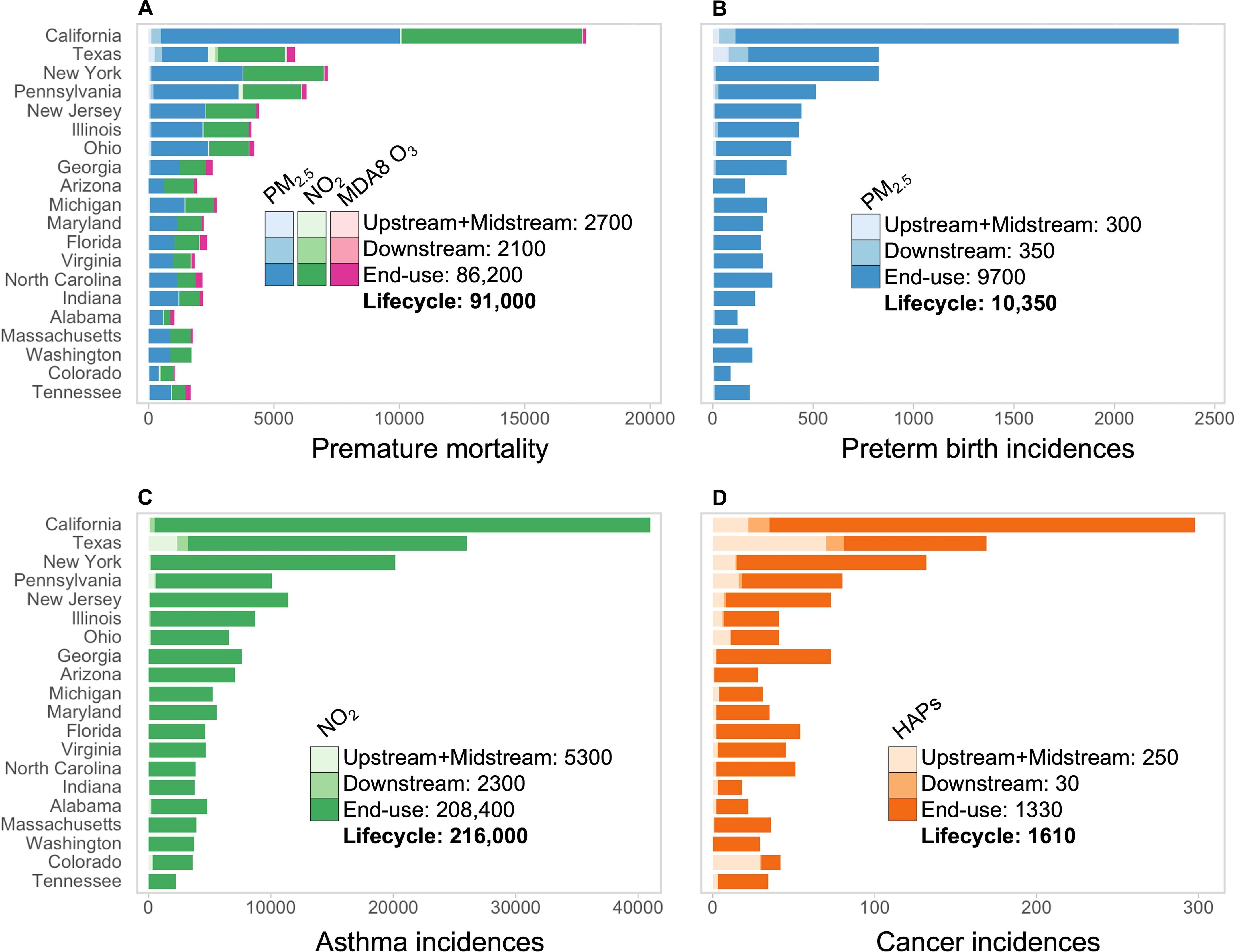美国主要石油和天然气生命周期阶段空气污染的健康负担和种族差异
IF 12.5
1区 综合性期刊
Q1 MULTIDISCIPLINARY SCIENCES
引用次数: 0
摘要
美国拥有世界上最大的石油和天然气(o&&g)工业之一,但在o&&g生命周期中产生的污染物对健康的影响和不公平的特征仍然很差。在这里,我们模拟了主要生命周期阶段(上游、中游、下游和最终用途)对空气污染的贡献,并估计了2017年美国各地相关的慢性健康结果和种族-民族差异。我们估计了由细颗粒物(PM2.5)、二氧化氮(NO2)和臭氧导致的91,000例过早死亡,由PM2.5导致的10,350例早产,由二氧化氮导致的216,000例儿童期哮喘发病率,以及由有害空气污染物(HAPs)导致的1610例终生癌症。在几乎所有生命周期阶段,少数族裔在接触和健康负担方面的差异最大。PM2.5和臭氧对黑人和亚洲人口的绝对差异最大,二氧化氮和悬浮微粒对亚洲人口的绝对差异最大。相对不平等在下游活动中最为极端,尤其是在路易斯安那州和德克萨斯州。本文章由计算机程序翻译,如有差异,请以英文原文为准。

The health burden and racial-ethnic disparities of air pollution from the major oil and gas lifecycle stages in the United States
The United States has one of the world’s largest oil and gas (O&G) industries, yet the health impacts and inequities from pollutants produced along the O&G lifecycle remain poorly characterized. Here, we model the contribution of major lifecycle stages (upstream, midstream, downstream, and end-use) to air pollution and estimate the associated chronic health outcomes and racial-ethnic disparities across the contiguous US in 2017. We estimate lifecycle annual burdens of 91,000 premature deaths attributable to fine particles (PM2.5), nitrogen dioxide (NO2), and ozone, 10,350 PM2.5-attributable preterm births, 216,000 incidences of NO2-attributable childhood-onset asthma, and 1610 lifetime cancers attributable to hazardous air pollutants (HAPs). Racial-ethnic minorities experience the greatest disparities in exposure and health burdens across almost all lifecycle stages. The greatest absolute disparities occur for Black and Asian populations from PM2.5 and ozone, and the Asian population from NO2 and HAPs. Relative inequities are most extreme from downstream activities, especially in Louisiana and Texas.
求助全文
通过发布文献求助,成功后即可免费获取论文全文。
去求助
来源期刊

Science Advances
综合性期刊-综合性期刊
CiteScore
21.40
自引率
1.50%
发文量
1937
审稿时长
29 weeks
期刊介绍:
Science Advances, an open-access journal by AAAS, publishes impactful research in diverse scientific areas. It aims for fair, fast, and expert peer review, providing freely accessible research to readers. Led by distinguished scientists, the journal supports AAAS's mission by extending Science magazine's capacity to identify and promote significant advances. Evolving digital publishing technologies play a crucial role in advancing AAAS's global mission for science communication and benefitting humankind.
 求助内容:
求助内容: 应助结果提醒方式:
应助结果提醒方式:


